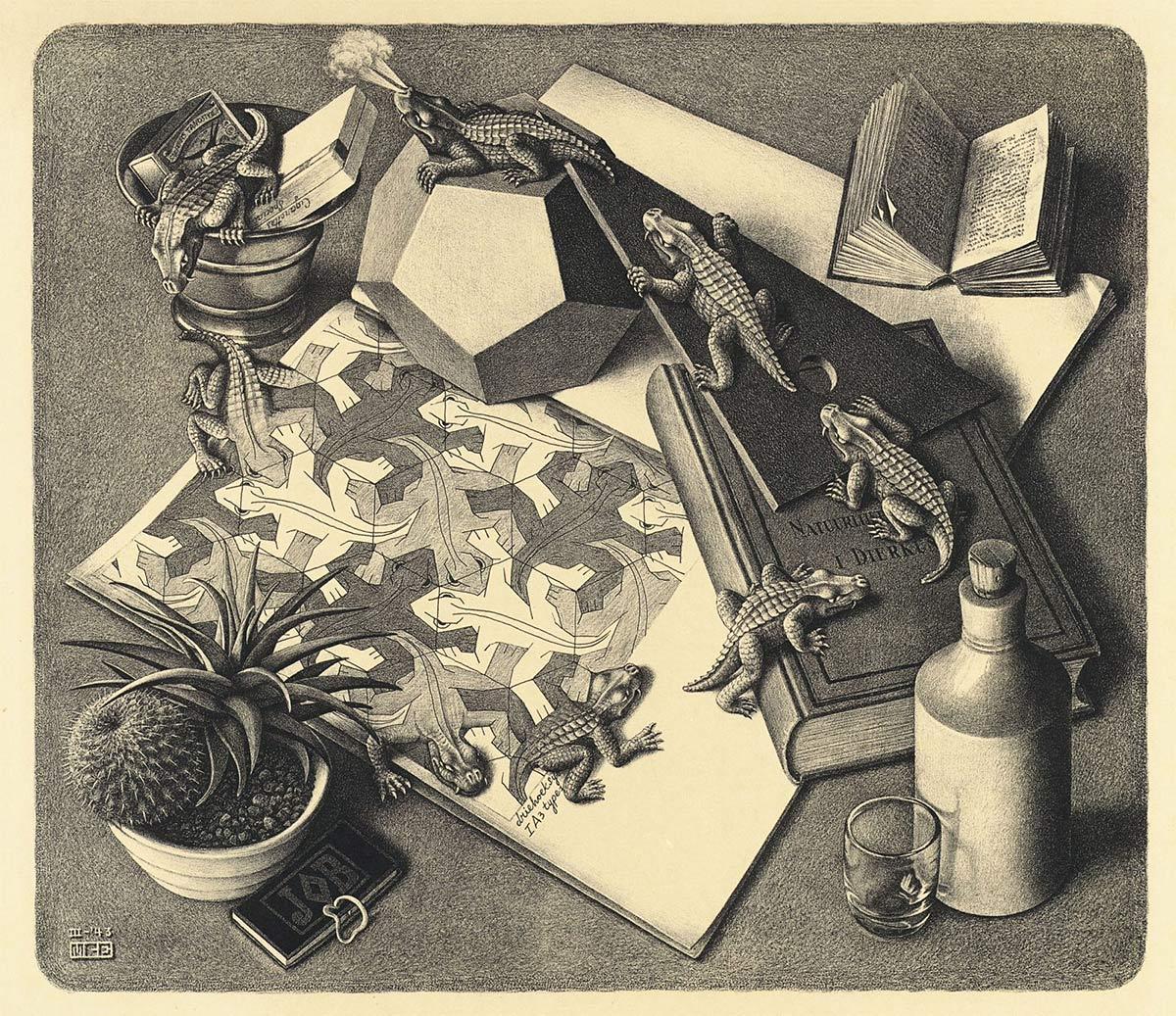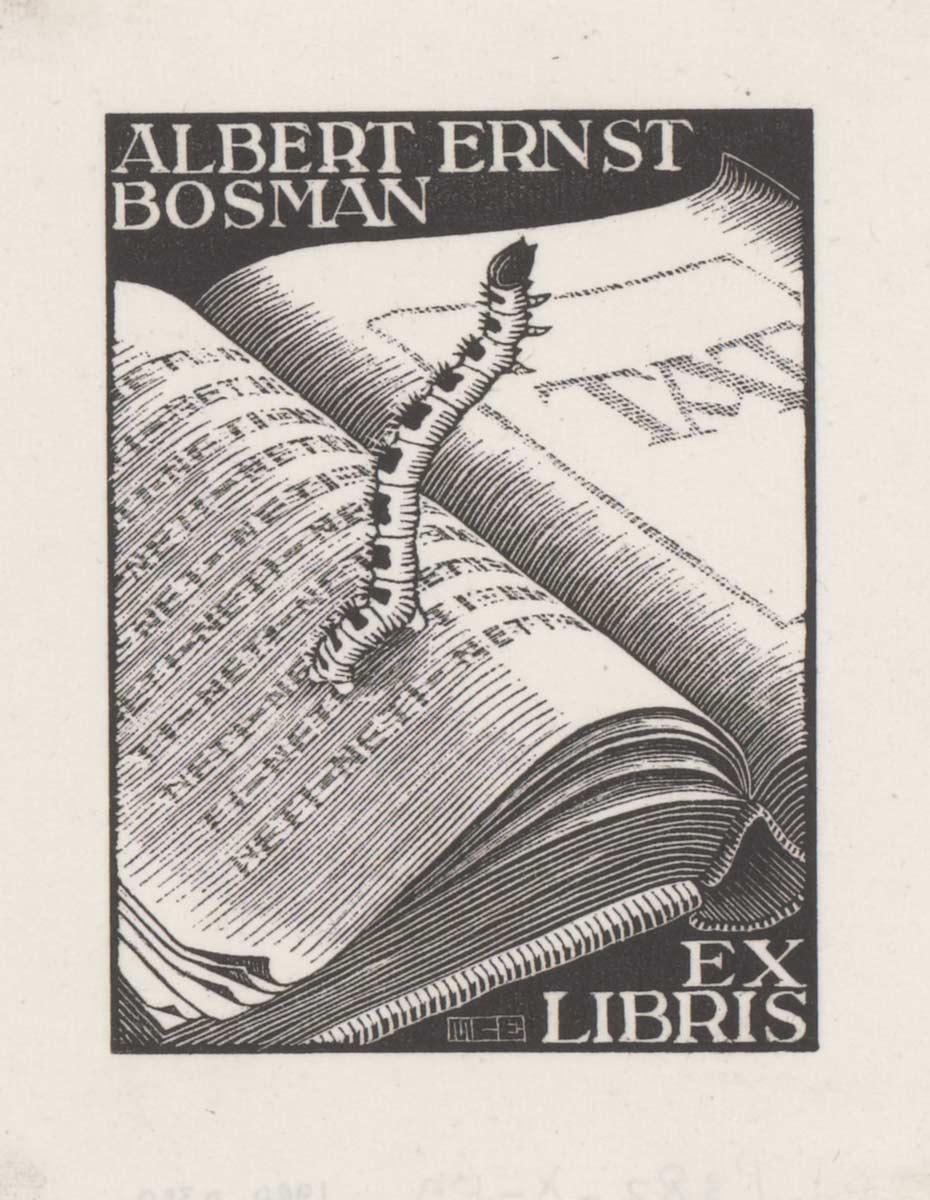

On 18 March 1960 Escher finished one of his most iconic works: the lithograph Ascending and Descending. The print was the result of a remarkable exchange of ideas between the graphic artist and the British mathematician Roger Penrose. The latter first came into contact with M.C. Escher at his solo exhibition in the Stedelijk Museum in Amsterdam in 1954, which was held during the International Congress of Mathematicians of that year.*
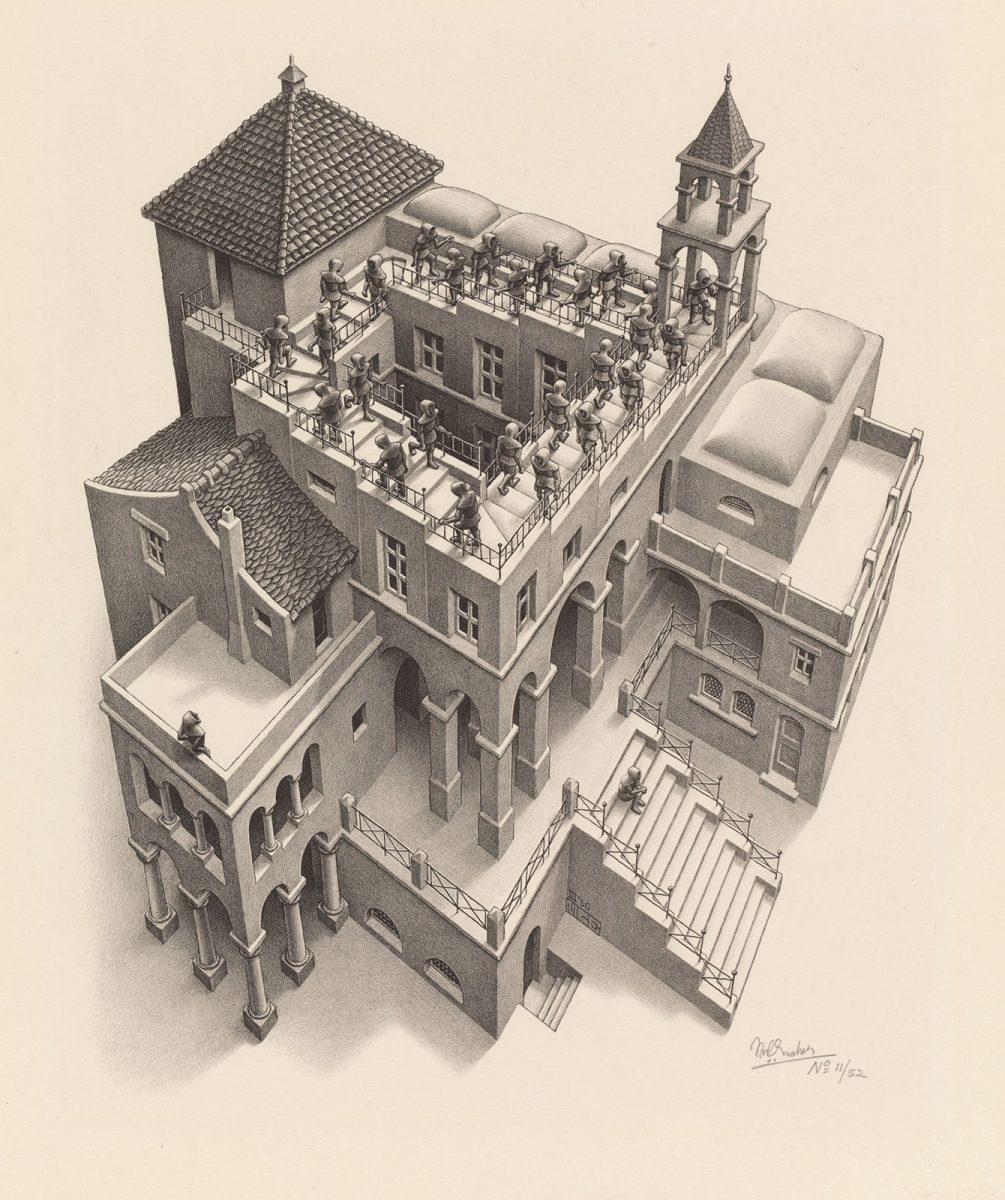
M.C. Escher, Ascending and Descending, lithograph, March 1960
Escher’s work impressed Penrose greatly and soon after, he began creating impossible images of his own. His father Lionel, himself an expert in genetics and mathematics, helped him and designed some models based on Roger’s drawings. Together they published an article in the February 1958 edition of the British Journal of Psychology called ‘Impossible Objects: A Special Type of Visual Illusion’. It included a drawing and a three-dimensional model of a continuous flight of stairs that seems to lead up (or down) forever. Escher was sent an copy of the article and now it was his turn to be deeply impressed.** The article sparked the idea for Ascending and Descending, which he started working on in late 1959. In April 1960 he wrote a letter to Roger and Lionel Penrose in which he thanked them for their invention. Along with his letter he enclosed a print of Ascending and Descending.
In the documentary The Art of the Impossible: MC Escher and Me Roger Penrose talks about his connection with Escher and how Ascending and Descending came to be.
Allow cookies
You need to change your cookie preferences to view the following content.
In a letter to his son Arthur from January 1960 Escher talks about the lithograph***:
'I am busy designing a new print showing a staircase that goes on endlessly ascending or descending, depending on your perspective. This would normally have to be a spiralling thing in which the top would disappear into the clouds and the bottom into hell. Not in my version. It is a sealed, annular affair, like a snake eating its own tail. Nevertheless, it is possible to draw it with the correct perspective, each step being higher or lower than the next one.'
The snake that bites its own tail – in mythology it is called an Ouroboros – is an archetype that Escher used more often in his work. Which is quite understandable, as it is a symbol of infinity and the cyclical nature of things: themes that are characteristic of the graphic artist. They can be recognized in prints such as Predestination, Möbius Strip I and Magic Mirror. Although Escher recognised the resemblance with the snake biting its own tail (whether he was familiar with the term Ouroboros is unclear), he left further interpretation to the viewer.
Incidentally, in his book The Graphic Work of M.C. Escher he did not fully adhere to that rule and he muses about the fate of the inhabitants of this building ****:
'A rectangular inner courtyard is bounded by a building that is roofed in by a never-ending stairway. The inhabitants of these living quarters would appear to be monks, adherents of some unknown sect. Perhaps it is their ritual duty to climb those stairs for a few hours each day. It would seem that when they get tired they are allowed to turn about and go downstairs instead of up. Yet both directions, though not devoid of significance, are equally futile. Two recalcitrant individuals refuse, for the time being, to take any part in this exercise. They have no use for it at all, but no doubt sooner or later they will be made to see the error of their nonconformity.'
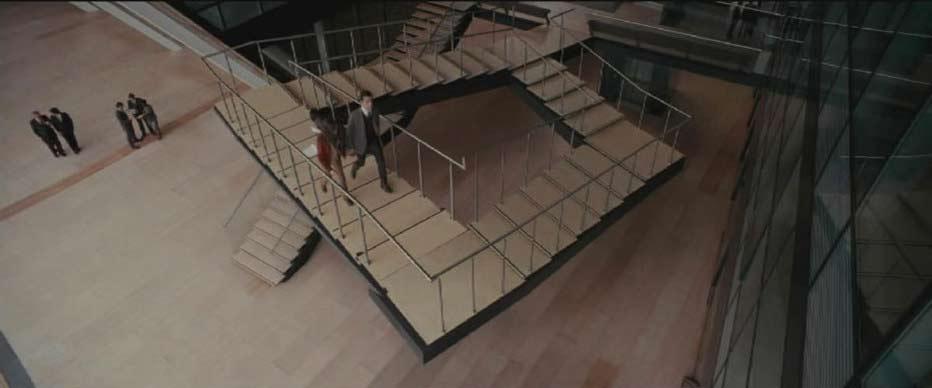
Source
[*] en [**] Wim Hazeu, M.C. Escher, Een biografie, Meulenhoff, 1998, page 399
[***] M.C. Escher, His Life and Complete Graphic Work, edited by J.L. Locher, Abradale Press, 1982, page 99
[****] The 2013 reissue by Taschen GMBH of M.C. Escher. The Graphic Work. Originally published by Royal publishing house J.J. Tijl NV, Zwolle 1959, page 15.
More Escher today

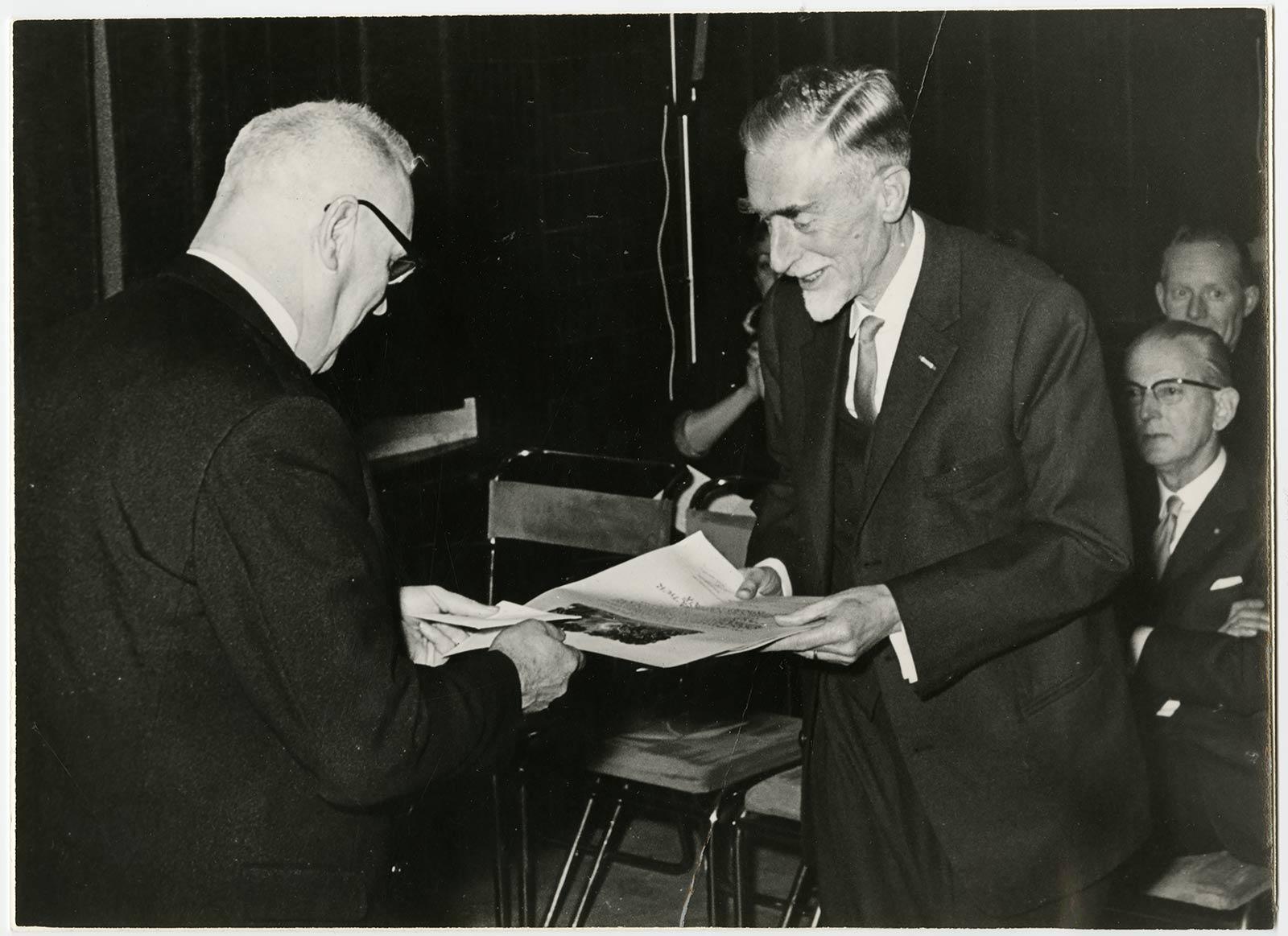
Cultural Prize of Hilversum, 1965
'By nature I am not spontaneous. Creating a graphic print demands patience and deliberateness and the ideas that I want to express in it usually come to life after careful consideration. Therefore, I mostly spend my time in a quiet studio and, however beneficial it might be to practicing my profession, it does not foster eloquence.'
